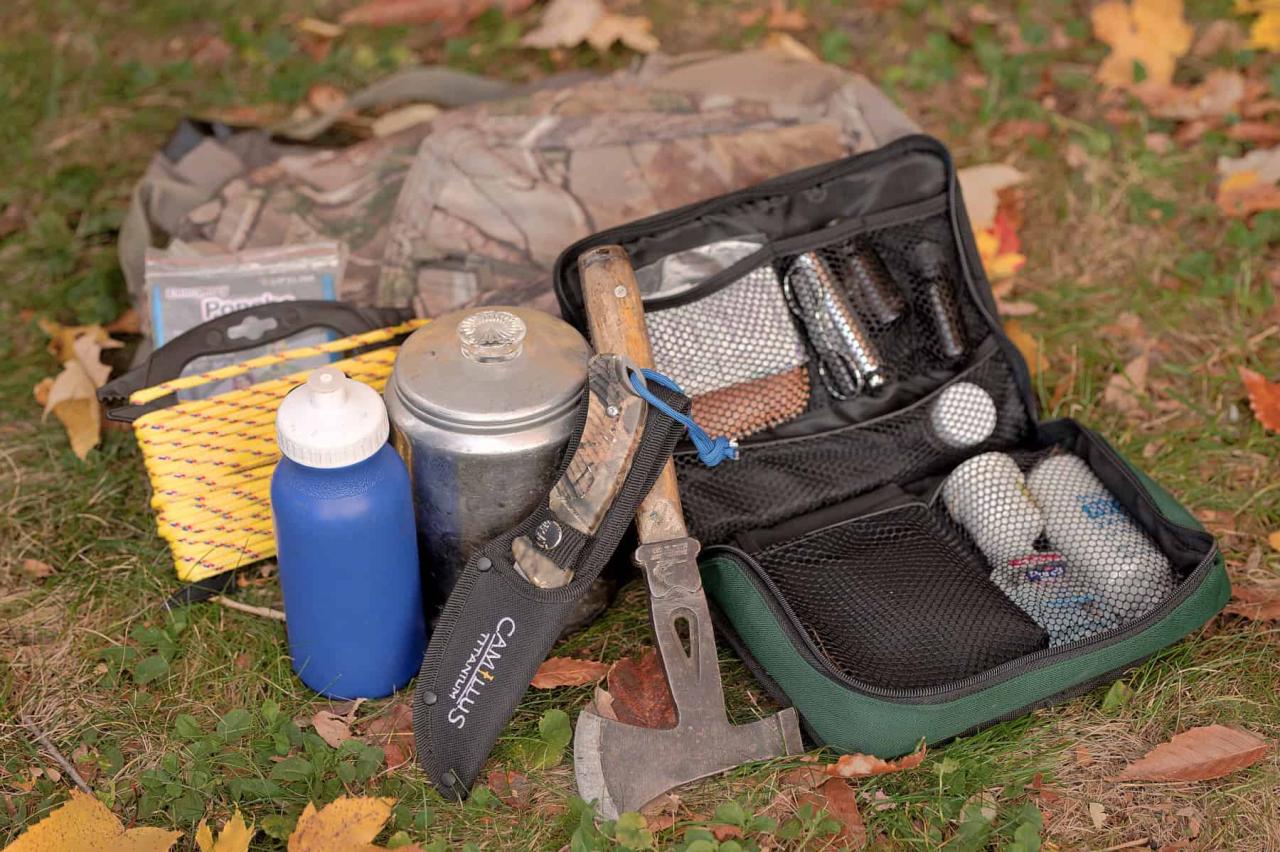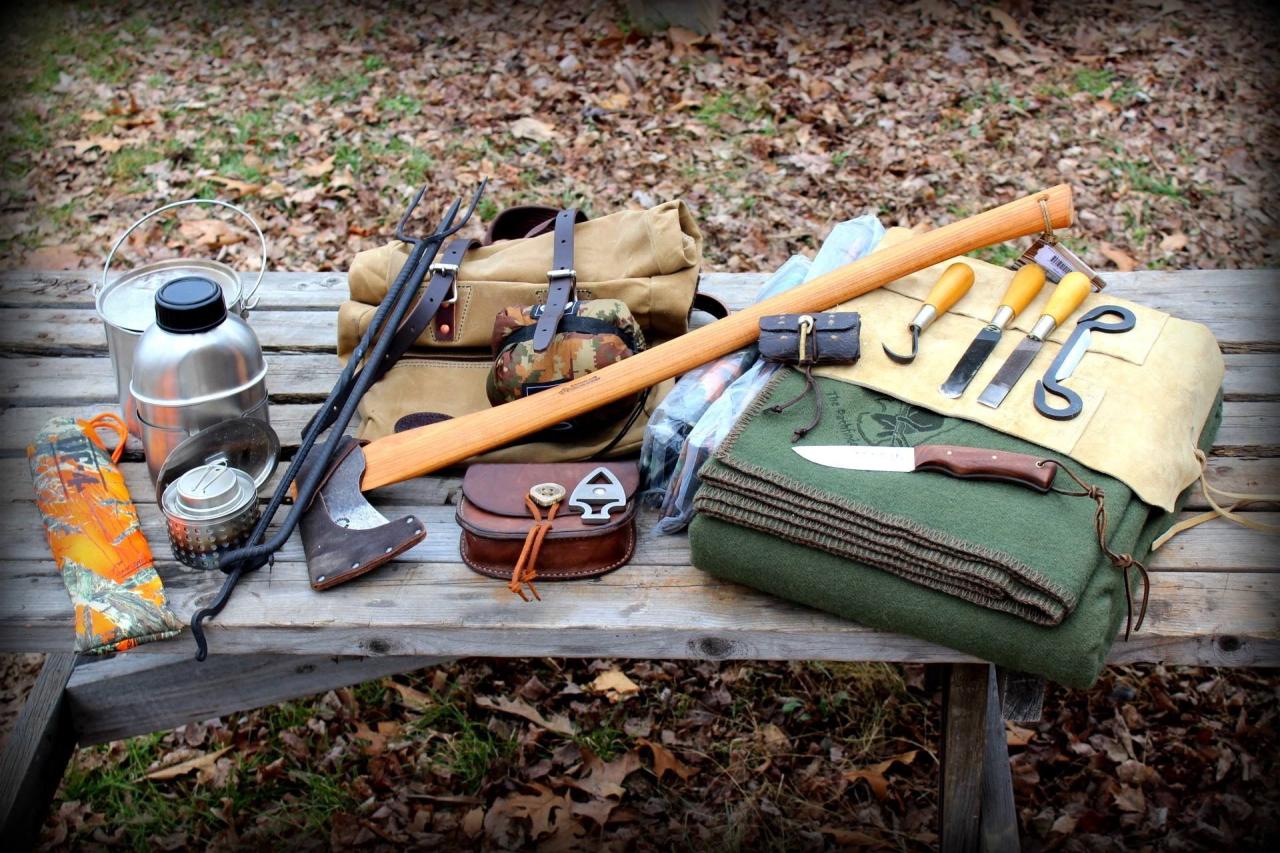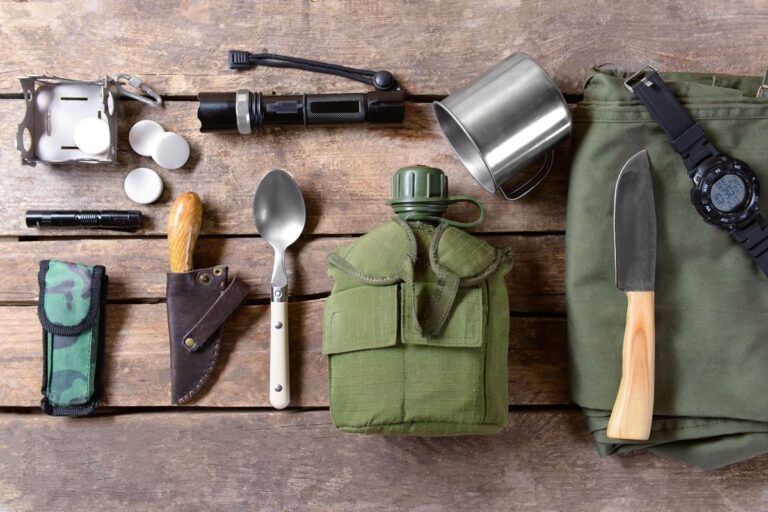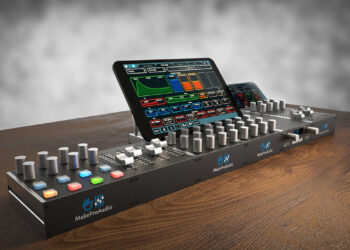Venturing into the great outdoors, whether for a challenging hike, an extended camping trip, or a simple day excursion, offers unparalleled experiences. However, nature’s beauty can quickly turn unforgiving without proper preparation. Equipping yourself with the right outdoor survival tools isn’t just a recommendation; it’s a critical safety measure that can mean the difference between discomfort and catastrophe. This comprehensive article delves into the essential gear every outdoor enthusiast should consider, explaining the function of each item, highlighting key features to look for, and emphasizing why these tools are indispensable for navigating unexpected challenges in wilderness environments. Learn how to build a robust survival kit that transforms potential threats into manageable situations, ensuring your safety and enhancing your confidence in any outdoor adventure.
Navigation and Orientation

Getting lost in the wilderness is a primary concern for any outdoor activity. Reliable navigation tools are paramount for staying on track and finding your way back if disorientation occurs.
A. Map and Compass
Even in the age of GPS, a physical map and a reliable compass remain essential. They don’t rely on batteries, cellular signals, or satellite connectivity, making them indispensable backups.
- Topographic Map: A topographic map provides detailed information about terrain, elevation, water sources, trails, and potential hazards. Always carry a waterproof map of the area you’re exploring and know how to read it. Learning contour lines, symbols, and scale is fundamental.
- Baseplate Compass: A baseplate compass (also known as an orienteering compass) is ideal for land navigation. Look for features like a clear baseplate for placing on a map, a declination adjustment, a magnifying glass, and luminous markings for low-light conditions. Practice taking bearings and orienting your map with the compass before you head out.
- Map Case/Protector: To protect your map from the elements, a durable, waterproof map case is crucial.
B. GPS Devices
While not a substitute for map and compass, a Global Positioning System (GPS) device offers precise location data, making navigation significantly easier, especially in complex terrain.
- Handheld GPS Unit: Dedicated handheld GPS units are rugged, often waterproof, and have long battery lives. They allow you to mark waypoints, track your route, and navigate to specific coordinates. Some models come pre-loaded with detailed topographic maps.
- Smartphone GPS Apps: Many smartphone apps offer GPS navigation with downloadable maps (for offline use). While convenient, remember that smartphones are less durable, more susceptible to temperature extremes, and have shorter battery lives than dedicated GPS units. Always carry a portable power bank if relying on your phone.
C. Altimeter and Barometer
These tools provide crucial environmental data, aiding navigation and forecasting weather.
- Altimeter: An altimeter measures altitude, often integrated into GPS devices or specialized watches. Knowing your elevation can help you pinpoint your position on a topographic map.
- Barometer: A barometer measures atmospheric pressure. A sudden drop in pressure often indicates approaching bad weather, giving you time to seek shelter or adjust your plans. Many outdoor watches integrate both altimeter and barometer functions.
Shelter and Protection
Exposure to the elements is a leading cause of outdoor emergencies. The ability to quickly establish shelter and protect yourself from temperature extremes is vital.
A. Emergency Shelter
- Emergency Blanket (Space Blanket): A compact, lightweight emergency blanket (mylar blanket) is inexpensive yet incredibly effective. It reflects up to 90% of body heat, providing immediate warmth in an emergency. It can also be used as a ground tarp, signaling device, or improvised shelter.
- Lightweight Tarp: A small, versatile tarp (at least 8×10 feet) can be configured into various shelters using cordage, offering protection from rain, wind, and sun. It’s more durable and reusable than an emergency blanket.
- Bivy Sack: A bivy sack (bivouac sack) is a minimalist, waterproof, and breathable cover for a sleeping bag, providing a lightweight emergency shelter solution, especially for unplanned overnights.
B. Fire Starting Tools
Fire is a cornerstone of survival, providing warmth, purifying water, cooking food, and acting as a signaling device. Always carry multiple ways to start a fire.
- Lighter (Butane): A simple, reliable butane lighter is often the easiest and quickest way to start a fire. Carry at least two, preferably wind-resistant models.
- Waterproof Matches: A backup for your lighter. Keep waterproof matches in a sealed, waterproof container.
- Ferro Rod (Fire Steel): A ferrocerium rod (fire steel) is highly reliable, works even when wet, and creates extremely hot sparks. It requires practice but is virtually foolproof once mastered.
- Tinder: Pack some dedicated fire tinder, such as cotton balls soaked in petroleum jelly, dryer lint, or commercial fire starters. Even in wet conditions, good tinder can help you get a fire going.
C. Personal Warmth
Warm Clothing Layers: Even in mild weather, carry extra layers of non-cotton clothing (wool or synthetics) to prevent hypothermia. A lightweight insulated jacket or fleece is crucial.
- Emergency Bivvy/Sleeping Bag: For colder environments or planned overnights, a compact, lightweight emergency bivvy or sleeping bag designed for warmth-to-weight ratio is essential.
Water and Food
Dehydration and lack of calories can quickly incapacitate you in a survival situation. Tools for obtaining and purifying water, along with emergency food, are critical.
A. Water Purification
Access to clean drinking water is paramount. Never rely solely on carrying enough water; learn to purify it from natural sources.
- Water Filter/Purifier: A portable water filter (e.g., Sawyer Squeeze, Lifestraw) or a chemical purifier (iodine tablets, chlorine dioxide drops) can make untreated water safe to drink. Filters remove bacteria and protozoa, while purifiers also kill viruses. Consider a system that addresses all three.
- Collapsible Water Bottle/Reservoir: Carry a durable, collapsible water bottle or hydration reservoir for easy collection and transport of water after purification.
- Metal Cup/Pot: A durable metal cup or small pot can be used to boil water for purification (a highly effective method for killing pathogens) or for cooking.
B. Emergency Food
While humans can survive for weeks without food, energy depletion affects judgment and physical capability.
- High-Energy Bars: Pack compact, high-calorie, non-perishable energy bars or similar rations. Look for items like energy gels, trail mix, or dehydrated meals that require minimal preparation. Ensure they are easy to eat on the go.
- Fishing Line and Hooks: A small kit with fishing line and hooks can provide a means to catch food in an extended survival scenario. This requires skill and patience but is a lightweight addition.
- Small Snare Wire: For trapping small game, a length of snare wire can be used. This also requires knowledge of animal behavior and trapping techniques.
First Aid and Health
Even minor injuries can become severe in the wilderness if not properly treated. A well-stocked first-aid kit is a non-negotiable survival tool.
A. Comprehensive First-Aid Kit
Your first-aid kit should be tailored to the duration and remoteness of your trip, but always include basics.
- Bandages and Dressings: Assorted sizes of adhesive bandages, gauze pads, sterile dressings, and medical tape for cuts, scrapes, and wounds.
- Antiseptic Wipes and Ointment: For cleaning wounds and preventing infection.
- Pain Relievers and Anti-inflammatories: Over-the-counter medication like ibuprofen or acetaminophen for headaches, muscle aches, and minor injuries.
- Allergy Medication: Antihistamines for allergic reactions, insect bites, or stings.
- Blister Treatment: Moleskin or specialized blister pads are crucial for foot care, as blisters can quickly incapacitate you on a hike.
- Personal Medications: Any prescription medications you or your companions need, clearly labeled and with instructions.
- Tweezers and Small Scissors: For removing splinters, ticks, or cutting tape/bandages.
- Gloves: Disposable non-latex gloves for administering first aid safely.
- Wound Closure Strips: For closing small lacerations that don’t require stitches.
- CPR Mask/Barrier: If you are trained in CPR, a small barrier can be invaluable.
- Instruction Guide: A compact first-aid instruction guide or wilderness first aid manual.
B. Insect Repellent and Sun Protection
- Insect Repellent: High-DEET or picaridin-based insect repellent to ward off mosquitoes, ticks, and other biting insects that can transmit diseases or cause severe discomfort.
- Sunscreen and Lip Balm: Protect your skin and lips from sunburn, which can lead to dehydration and heatstroke.
- Hat and Sunglasses: Wide-brimmed hats protect your face and neck from the sun, and sunglasses protect your eyes from UV radiation and glare.
Signaling and Communication

In an emergency, the ability to signal for help is as important as self-reliance.
A. Signaling Devices
Whistle: A loud, pealess whistle is small, lightweight, and requires minimal effort to produce a piercing sound that travels farther than a shout. The international distress signal is three short blasts.
- Signal Mirror: A signal mirror can reflect sunlight over long distances, potentially attracting the attention of aircraft or distant search parties. Practice using it.
- Brightly Colored Material: A piece of brightly colored fabric (e.g., orange or reflective material) can be spread on the ground to make you more visible from the air.
- Headlamp/Flashlight: A powerful headlamp or flashlight (with extra batteries) is essential for navigating in the dark, but also for signaling at night (e.g., three flashes for distress). Look for models with different brightness settings and a strobe function.
B. Communication Devices
- Satellite Messenger/PLB: For remote areas without cell service, a satellite messenger (e.g., Garmin inReach, Zoleo) or a Personal Locator Beacon (PLB) is a vital lifeline. Satellite messengers allow two-way text communication and SOS functions, while PLBs transmit a distress signal to rescue authorities. These devices require a subscription.
- Fully Charged Cell Phone: While unreliable in the backcountry, a fully charged cell phone can be useful in areas with unexpected service, for calling for help, or for quick reference if you’ve downloaded maps. Keep it in a waterproof bag and conserve battery.
Tools for Utility and Repair
A selection of versatile tools can help you build, repair, and adapt to unforeseen challenges.
A. Knife
A high-quality knife is arguably the most important survival tool, used for countless tasks.
- Fixed-Blade Knife: A sturdy, full-tang fixed-blade knife with a blade length of 4-6 inches is ideal for survival. It’s more durable and reliable for heavy-duty tasks like batoning wood, preparing kindling, or field dressing game. Look for a comfortable, non-slip grip and a sharp, corrosion-resistant blade.
- Multi-tool: A multi-tool combines pliers, various knife blades, screwdrivers, saws, and other implements into a compact unit. It’s incredibly versatile for small repairs, opening cans, or tightening loose screws. While not a substitute for a robust fixed-blade knife, it’s an excellent companion.
B. Cutting and Chopping
- Folding Saw: A compact folding saw is much more efficient than a knife for cutting firewood or clearing branches from a trail. Look for a sharp, durable blade that locks securely.
- Small Axe/Hatchet: For more serious wood processing or shelter building, a small, lightweight axe or hatchet can be invaluable, though it adds significant weight.
C. Repair and Cordage
- Duct Tape: A small roll of duct tape can repair almost anything – torn gear, broken poles, even minor injuries. It’s incredibly versatile.
- Paracord (Utility Cord): At least 50 feet of 550 paracord (parachute cord) is a must-have. Its strength and versatility are unmatched for building shelter, hanging food, making snares, creating improvised repairs, or even replacing shoelaces.
- Zip Ties: A few heavy-duty zip ties can provide quick, strong temporary repairs or secure items.
- Repair Kit (for specific gear): If you have inflatable sleeping pads, tents, or specific equipment prone to punctures, carry a small repair kit designed for that item.
The Most Important Survival Tool
All the gear in the world is useless without the knowledge and training to use it effectively. This is arguably your most critical survival tool.
A. Skills and Preparedness
- Wilderness First Aid Training: Take a certified wilderness first aid course. Knowing how to treat injuries, manage illnesses, and improvise medical solutions in remote settings is invaluable.
- Navigation Skills: Practice using your map and compass, learning how to take bearings, triangulate your position, and identify landmarks.
- Fire Starting Skills: Practice starting fires using various methods, especially in challenging conditions.
- Shelter Building Skills: Understand basic principles of shelter construction using natural materials or your tarp.
- Knot Tying: Learn essential knots for shelter building, securing gear, and various utility tasks.
- Basic Survival Knowledge: Familiarize yourself with principles of the “Rule of Threes” (3 minutes without air, 3 hours without shelter in extreme weather, 3 days without water, 3 weeks without food), signaling techniques, and basic search and rescue principles.
- Physical Fitness: Maintain a reasonable level of physical fitness appropriate for your intended outdoor activities.
B. Trip Planning and Communication
- Leave a Trip Plan: Always leave a detailed trip plan with a trusted contact, including your route, expected return time, and who to contact if you don’t check in.
- Weather Monitoring: Check the weather forecast before and during your trip. Be prepared for sudden changes.
- Know Your Limits: Be honest about your skills and physical limitations and choose activities appropriate for your experience level. Don’t venture beyond your comfort zone without proper guidance and preparation.
Conclusion
Building a comprehensive outdoor survival kit is a proactive step towards safety and self-reliance in the wilderness. It’s a collection of tools, yes, but more importantly, it’s a testament to responsible preparation. From the timeless reliability of a map and compass to the modern precision of a GPS, from the life-saving warmth of a fire to the critical care of a first-aid kit, each item plays a vital role.
Remember, the true power of these tools lies in your ability to use them. Invest in quality gear, but invest even more in knowledge and practice. With the right equipment and the necessary skills, you’ll be well-prepared to face the unexpected, allowing you to fully embrace the beauty and challenge of the great outdoors, knowing you have the means to thrive, even when circumstances turn dire. Your safety is your responsibility, and a well-equipped survival kit is your ultimate companion.










